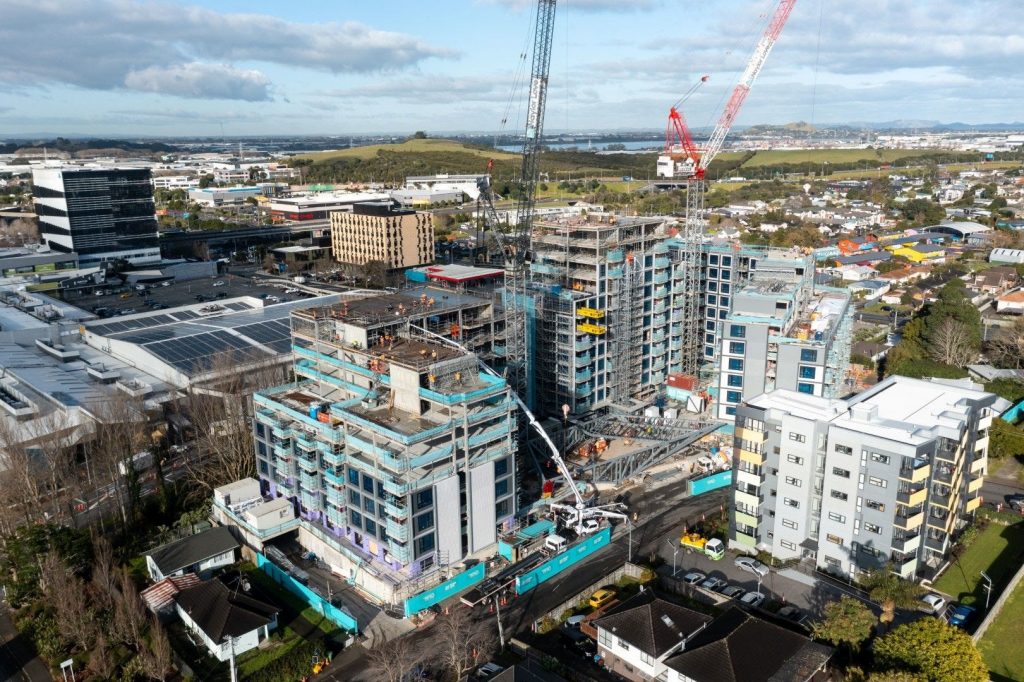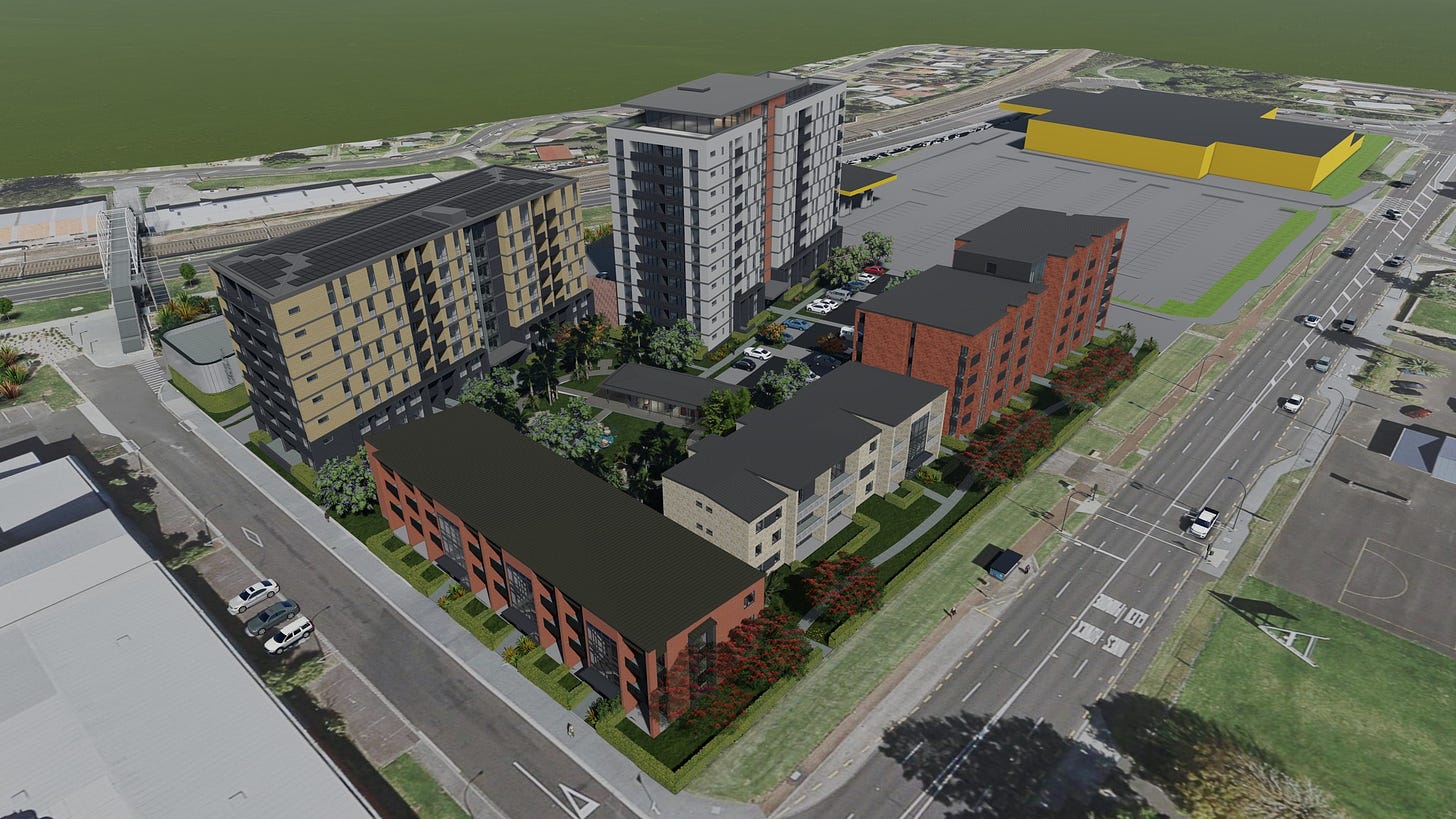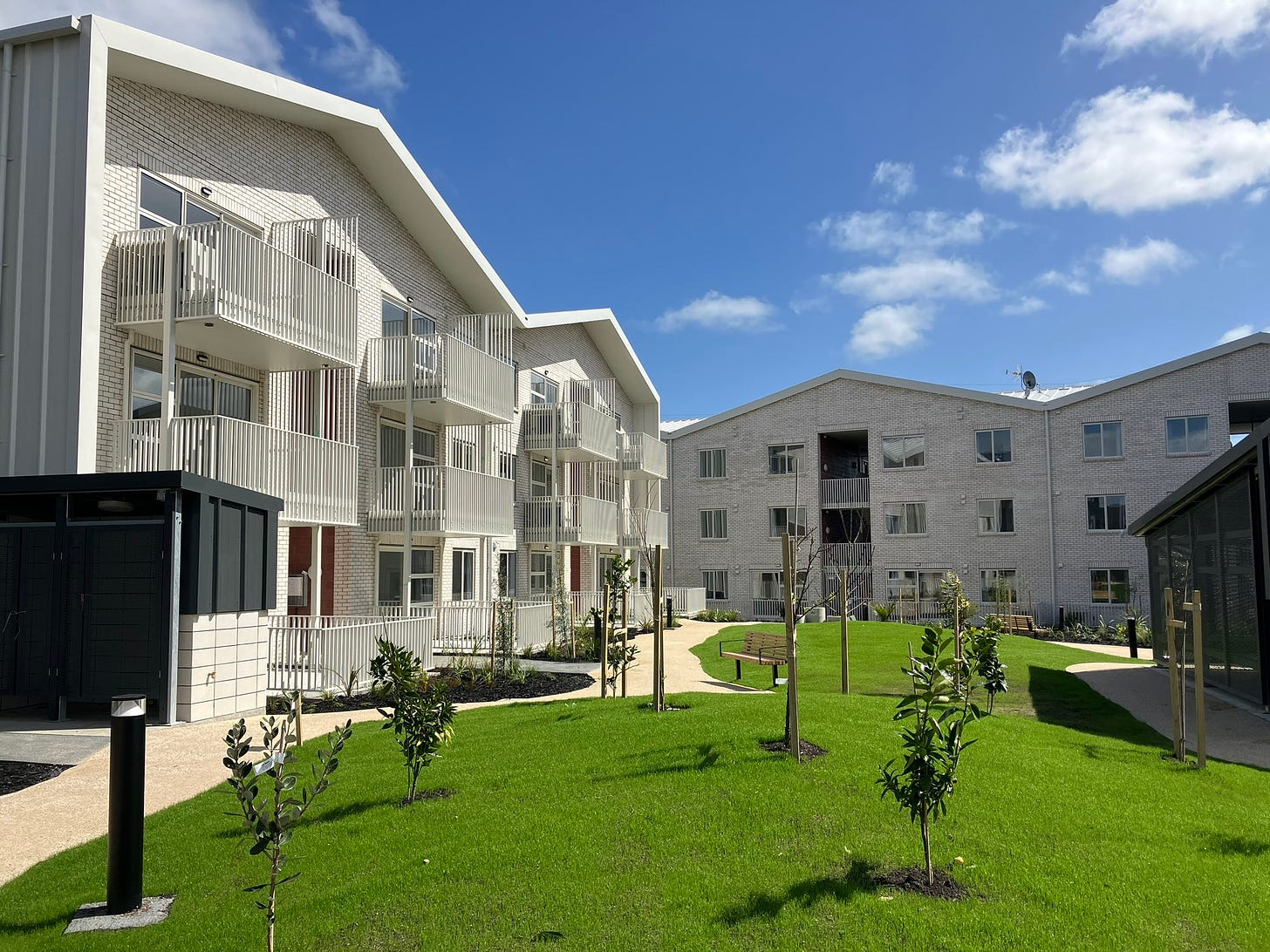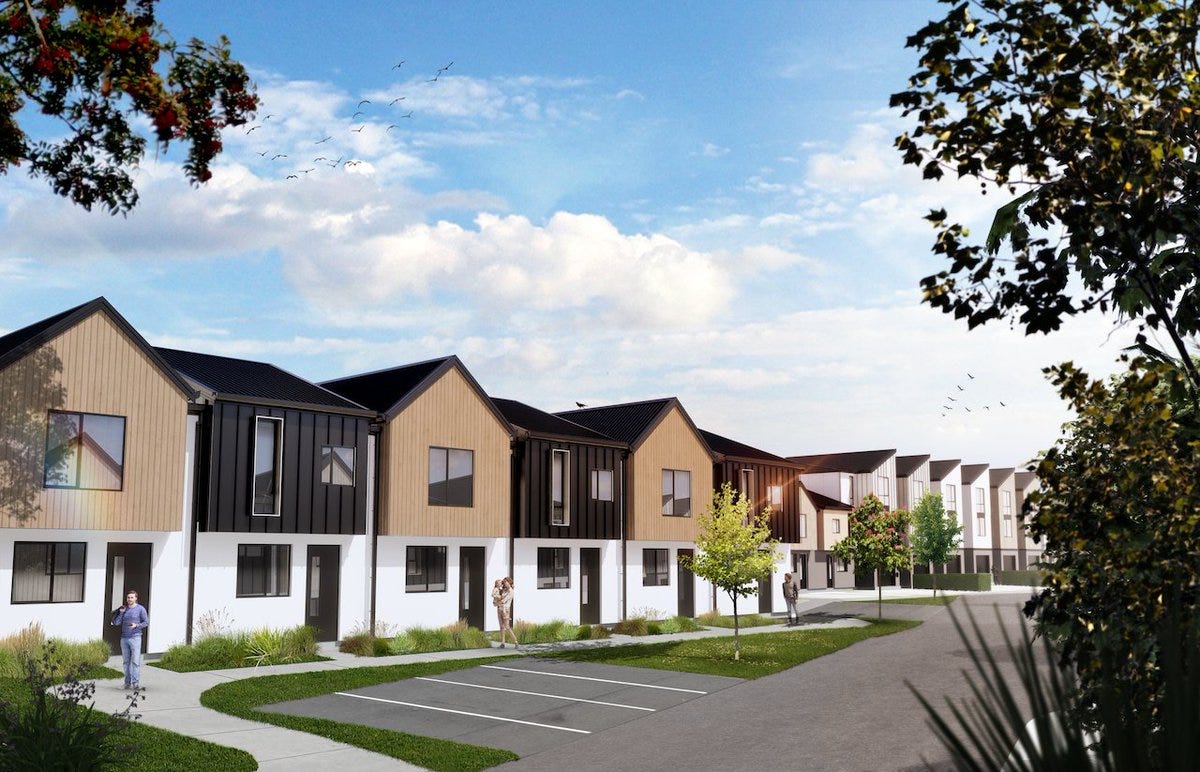While the New Zealand housing crisis is not over and higher interest rates are leading to lower house sales and new consents, a positive story is emerging in the burgeoning Build to Rent sector, Better things are possible’s Malcolm McCracken writes

The Ministry of Housing and Urban Development defines Build to Rent housing as “a type of medium to high-density residential development, specifically built to provide long-term rental housing.” While student accommodation meets many of those characteristics, it is a separate category, and a key distinction is the length of stay that is possible.
As covered previously on Better things are possible, this approach has several key benefits.
- Investors are adding new housing supply, unlike when investors buy existing homes to rent out. There has been significant growth in new homes built in recent years. However, we still likely have an overall shortfall which will likely only get worse with provisional net migration being a record 96,200 gain in the July 2023 year.
- They are new builds, built to the latest standards and sometimes above. This makes the homes healthier to live in and cheaper to operate for the tenants with lower heating bills for example.
- There is one landlord who has an interest in maintaining the building as a whole. This avoids the situation of body corporates representing owners, effectively shutting out renters, who are sometimes reluctant to fund needed maintenance and improvements.
- The model generally supports housing built around shared communal facilities, car-share vehicles and extra investment in sustainability initiatives.
- Single ownership over a long period offers greater security. A BRANZ report found that 36% of Auckland tenants who had moved in the two years to 2018, did so due to the house being sold. Furthermore, Build to Rent typically offers long-term rental contracts with most companies offering up to 10 years.
Burgeoning you say?
Simplicity Living is one of the largest and most high-profile players in the New Zealand Build to Rent sector. It was established when developer NZ Living was gifted to Simplicity, a Kiwisaver provider. This provides the new company with significant capital to deliver new Build to Rent homes. Since launching in 2021, Simplicity has completed and leased 90 new homes with at least another 766 in design, consenting or under construction across Auckland.
They recently posted a render of their Mt Wellington development, Reiputa, which will include 295 homes within a 10-minute walk of the Panmure Train Station and Town Centre. They also have plans to build in Queenstown and other cities with their eventual goal is to reach 10,000 homes across Aotearoa.

Another key benefit of Build to Rent is it enables housing in locations where other housing tenures may not be achievable like shopping malls, where the owner typically seeks to maintain complete land ownership. One example of this is Kiwi Property, which is nearing the completion of its first Build to Rent development of 295 apartments at Sylvia Park. It plans at least 245 apartments at Lynnmall in New Lynn and over 1200 apartments at Sylvia Park.
There are a number of other companies including Residential Properties, Ockham Residential and New Ground Living, who have a growing portfolio across Auckland and Queenstown. Cedar Pacific and McConnell Property Limited, who both have developed or are developing student accommodation in the Auckland City Centre, are the developers of the so-called “Burj Takapuna” which will deliver 358 new purpose rental properties to the Takapuna town centre, close to shops, public transport and the beach.
Partnerships with Iwi
Another emerging trend is the role of Iwi in developing Build to Rent housing. Ngāi Tahu Property has nearly completed a 52-apartment development in Hobsonville Point. It includes a range of one-bedroom+study options through to two and three-bedroom apartments, that will be available as long-term rentals.

New Ground Living has recently partnered with Hāpai, a joint property fund by multiple Iwi, to open Moroki, a new 50-unit, build-to-rent development in Glen Innes. It has a range of one to three-bedroom homes that are now available for rent with terms of up to 10 years.
It’s not just in Auckland
Positively, multiple players are looking beyond the Bombays. Simplicity is looking at developing in Queenstown, which has a chronic housing crisis. It is also great to see New Ground Living with consent underway for an 89-unit, mixed-tenure, townhouse development proposed for Bureta Park, Tauranga. The development is in partnership with Mike Greer Commercial and Purpose Capital and will consist of 45 build-to-rent units, some community housing units & some reserved for first-home buyers. The development is targeting an 8 Homestar rating and is located directly beside a local centre which includes a supermarket.

What policy has changed?
As previously covered in 2021, there was no exemption for existing Build to Rent developments from the interest deductibility rules. I explained at the time, my concern that this would create uncertainty in the Build to Rent market.
In March 2023, this was addressed through legislation to exclude new and existing build-to-rent developments from the interest limitation rules. The intent of the exclusion is to ensure that interest deductibility rules do not disincentivise investment in Build to Rent developments. This should support new rental supply and housing choice.
The requirements for registered build-to-rent include:
- 20 or more dwellings in a single development on a single block or adjacent blocks, held in one or more titles
- owned by the same person (a person includes a legal entity like a company)
- each dwelling is being prepared for use, available, or occupied under a residential tenancy
- every residential tenancy has the option of a 10-year term, which will enable tenants to terminate the tenancy with 56 days’ notice under section 58A of the Residential Tenancies Act 1986
- every tenancy agreement includes a personalisation policy with examples of possible personalisations and the landlord’s position on the keeping of pets.
It is positive to see some clear guidelines and policies for the sector. This change is particularly important for the continuation of Build to Rent developments that existed prior to policy change, like Ockham’s Modal in Mount Albert.
Overall, there has been some real growth in the past couple of years with more set to follow. I think there is real potential for the Build to Rent sector to provide greater housing choice and rental security. This could be particularly important in ensuring there is secure workforce housing in the most unaffordable rental markets like Auckland, Tauranga and Queenstown. While there is no single solution to the housing crisis our country faces, this can certainly play a part in the solution.









